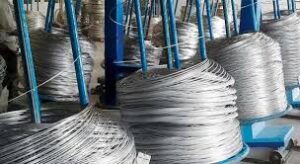Window tinting, once primarily associated with enhancing the commercial tinting brooklyn ny aesthetics of vehicles, has become a multifaceted solution for a variety of needs, including residential and commercial applications. This process involves applying a thin film to the glass surfaces, which can significantly improve privacy, reduce energy costs, and protect against harmful UV rays. This article delves into the myriad benefits of window tinting, explores the different types of window films available, and provides insights into the installation process.
Benefits of Window Tinting
- UV Protection
One of the primary benefits of window tinting is its ability to block harmful ultraviolet (UV) rays. Standard window films can block up to 99% of UV rays, which helps protect your skin from long-term damage and reduces the fading of interior furnishings. - Energy Efficiency
Tinted windows can dramatically improve the energy efficiency of a building. By reducing the amount of heat that enters through the windows, window tinting helps maintain a consistent indoor temperature. This can lead to lower cooling costs in the summer and reduced heating expenses in the winter. - Enhanced Privacy and Security
Window tinting provides an added layer of privacy by limiting the view into your vehicle or home from the outside. Additionally, some types of window films are designed to hold glass shards together in the event of breakage, enhancing safety and security. - Glare Reduction
Excessive glare from the sun can be a nuisance, especially when driving or working on a computer. Window tinting reduces glare, improving comfort and visibility without the need for curtains or blinds. - Aesthetic Appeal
Tinted windows offer a sleek, modern look to vehicles and buildings. With various shades and styles available, window films can complement the exterior design and enhance the overall appearance.
Types of Window Films
- Dyed Window Film
Dyed window film is the most affordable option and is commonly used for its aesthetic benefits. This type of film uses a dye to absorb solar heat, which helps reduce heat and glare. However, it may not be as effective in blocking UV rays compared to other types. - Metalized Window Film
Metalized films contain tiny metallic particles that reflect heat and UV rays. They are highly durable and effective in reducing heat and glare. However, they can interfere with electronic signals, such as GPS and cell phone reception. - Hybrid Window Film
Combining the benefits of dyed and metalized films, hybrid window films offer good heat and UV protection without significant signal interference. They provide a balance of performance and cost-effectiveness. - Ceramic Window Film
Ceramic films are the highest quality and most expensive option. They contain ceramic particles that block UV rays, reduce heat, and minimize glare without interfering with electronic signals. Ceramic films are highly durable and provide superior clarity. - Carbon Window Film
Carbon films are known for their matte finish and excellent heat rejection properties. They do not contain metals, so they do not interfere with electronic devices. Carbon films also offer a high level of UV protection and are resistant to fading.
Installation Process
- Preparation
The first step in the installation process is to thoroughly clean the windows. Any dirt, dust, or grease on the glass surface can affect the adhesion of the film. Professional installers use special cleaning solutions and tools to ensure the glass is spotless. - Measuring and Cutting
The window film is carefully measured and cut to fit the exact dimensions of the window. Precision is crucial to ensure a seamless fit and avoid gaps or overlaps. - Applying the Film
The backing of the window film is peeled off, revealing the adhesive side. The film is then carefully applied to the window, starting from the top and working down. Installers use a squeegee to smooth out any air bubbles and ensure proper adhesion. - Final Touches
Once the film is applied, the edges are trimmed, and the film is allowed to cure. The curing process can take several days, during which the film should not be disturbed to ensure it adheres properly to the glass.
Conclusion
Window tinting is a versatile and beneficial solution for enhancing privacy, improving energy efficiency, and protecting against UV rays. With various types of films available, homeowners, business owners, and vehicle owners can choose the best option to meet their specific needs. Whether for aesthetic enhancement or practical benefits, professional window tinting is an investment that pays off in numerous ways.



